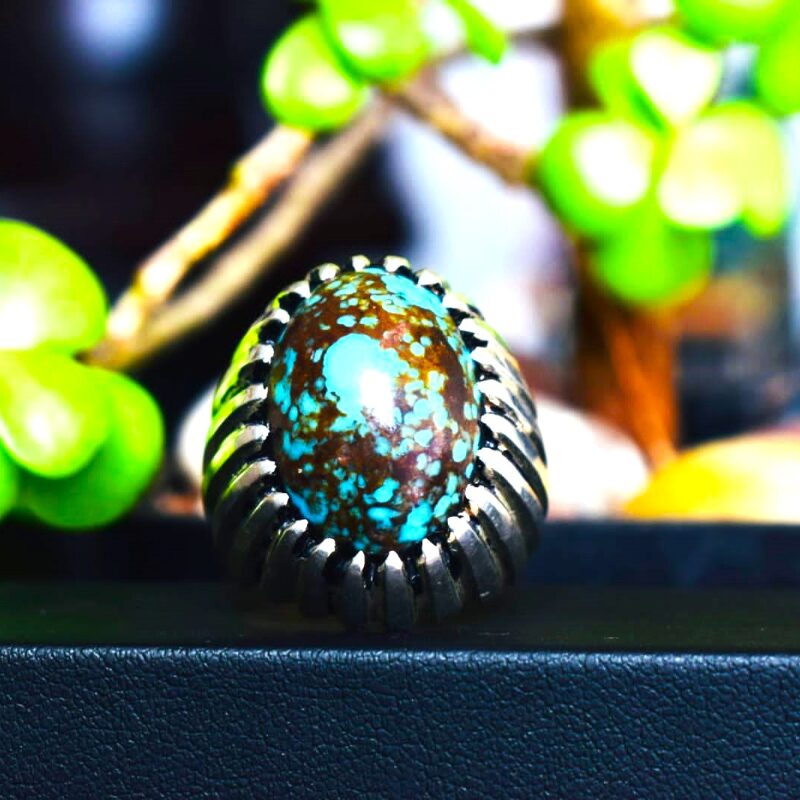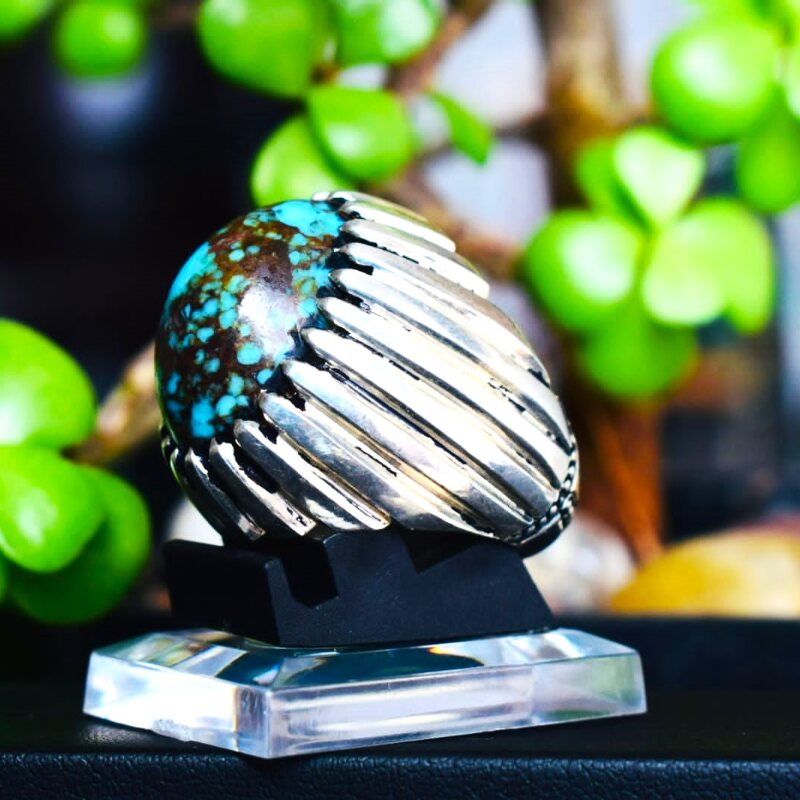Natural Lander Blue Turquoise | Feroza Ring – Handcrafted Elegance with Healing Power
Discover the rare beauty and spiritual strength of the Natural Lander Blue Turquoise | Feroza Ring, also known as Feroza in Eastern traditions. This striking ring features a genuine natural Lander Blue Turquoise, famed for its deep blue hue with natural black matrix—making each piece truly one-of-a-kind.
Each Natural Lander Blue Turquoise | Feroza Ring is a timeless blend of nature’s artistry and skilled craftsmanship. The vibrant blue hues paired with the bold black matrix tell a story of Earth’s geological magic—formed over millions of years. Whether you’re drawn to its metaphysical qualities or captivated by its rarity and beauty, this ring makes a meaningful addition to any gemstone collection. It’s not just a ring—it’s a statement of individuality, energy, and elegance.
Why Lander Blue Turquoise?
Lander Blue is one of the rarest and most collectible types of turquoise in the world. It’s prized for its intense color, tight matrix, and limited availability—making this ring not just a piece of jewelry, but a true investment.
Key Features of Natural Turquoise:
- Vibrant Color: Each piece of natural turquoise showcases a unique blend of azure blue, green, and sometimes hints of yellow or brown, offering a one-of-a-kind aesthetic.
- Natural Patterns:
- Historical Significance: Used by ancient civilizations such as the Egyptians, Persians, and Native Americans. Turquoise has a rich history and cultural importance, often believed to possess protective and healing properties.
- Durability: With a hardness of 5-6 on the Mohs scale. Turquoise is durable enough for everyday wear while still requiring gentle care to maintain its luster.
- Versatility: Available in various cuts and shapes.
our turquoise & Rings collection
Turquoise:
Turquoise is an opaque, blue-to-green mineral that is a hydrous phosphate of copper and aluminium. With the chemical formula CuAl6(PO4)4(OH)8·4H2O. People prize it as a gemstone for its hue, and its rarity and value in finer grades have made it highly sought after for millennia.
However, despite these challenges,natural turquoise remains a highly sought-after gemstone. In fact, its unique color and history continue to make it a popular choice among jewelry enthusiasts. Additionally, the demand for natural, untreated turquoise is steadily increasing, highlighting the enduring appeal of this beautiful gem
The word turquoise dates to the 17th century. Additionally, it derives from the Old French turquois, meaning “Turkish,” because merchants first brought the mineral to Europe through the Ottoman Empire. However, according to Etymonline, the word dates to the 14th century with the form turkeis, meaning “Turkish.”. In the 1560s, French replaced it with turquoise. According to the same source, the gemstone was first brought to Europe from Turkestan or another Turkic territory. Pliny the Elder referred to the mineral as callais (from Ancient Greek κάλαϊς) and the Aztecs knew it as chalchihuitl.


Reviews
There are no reviews yet.